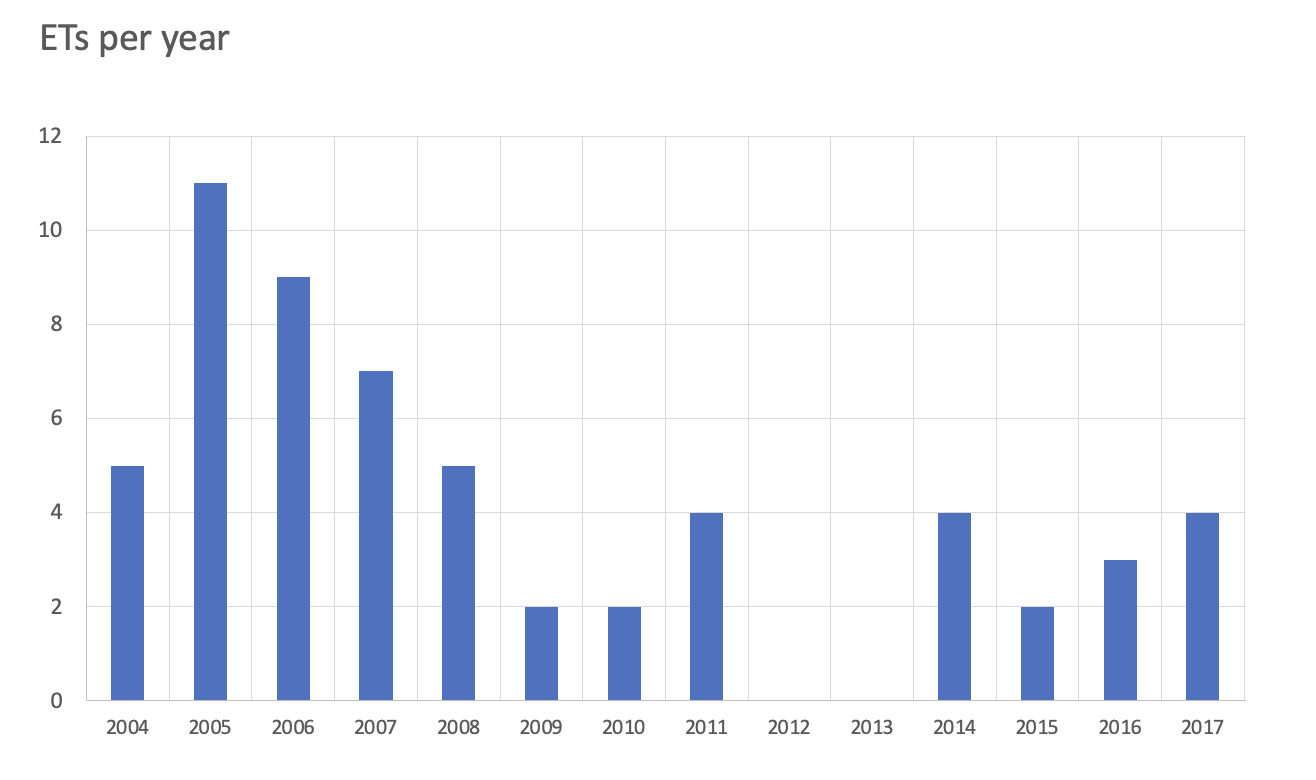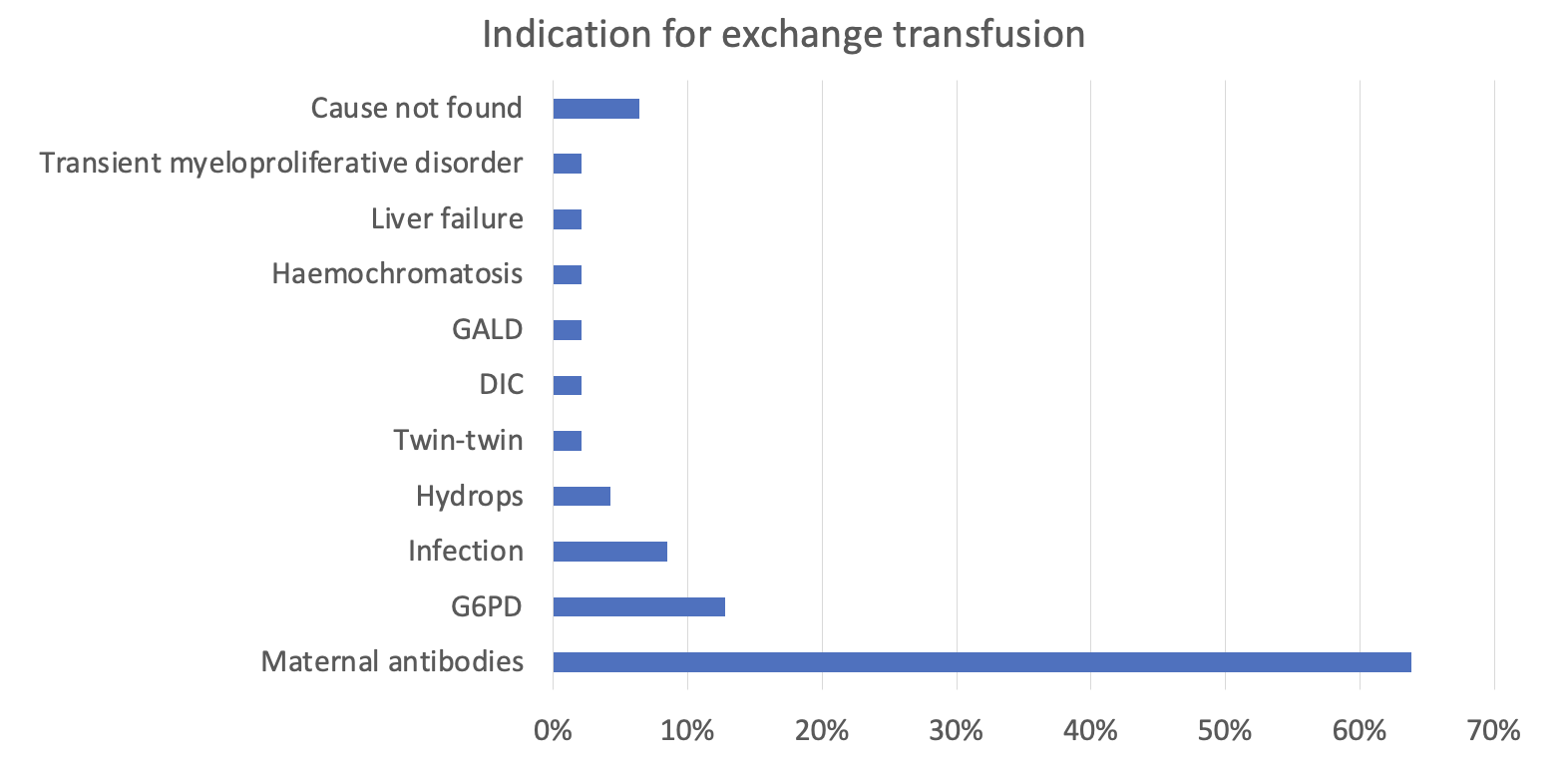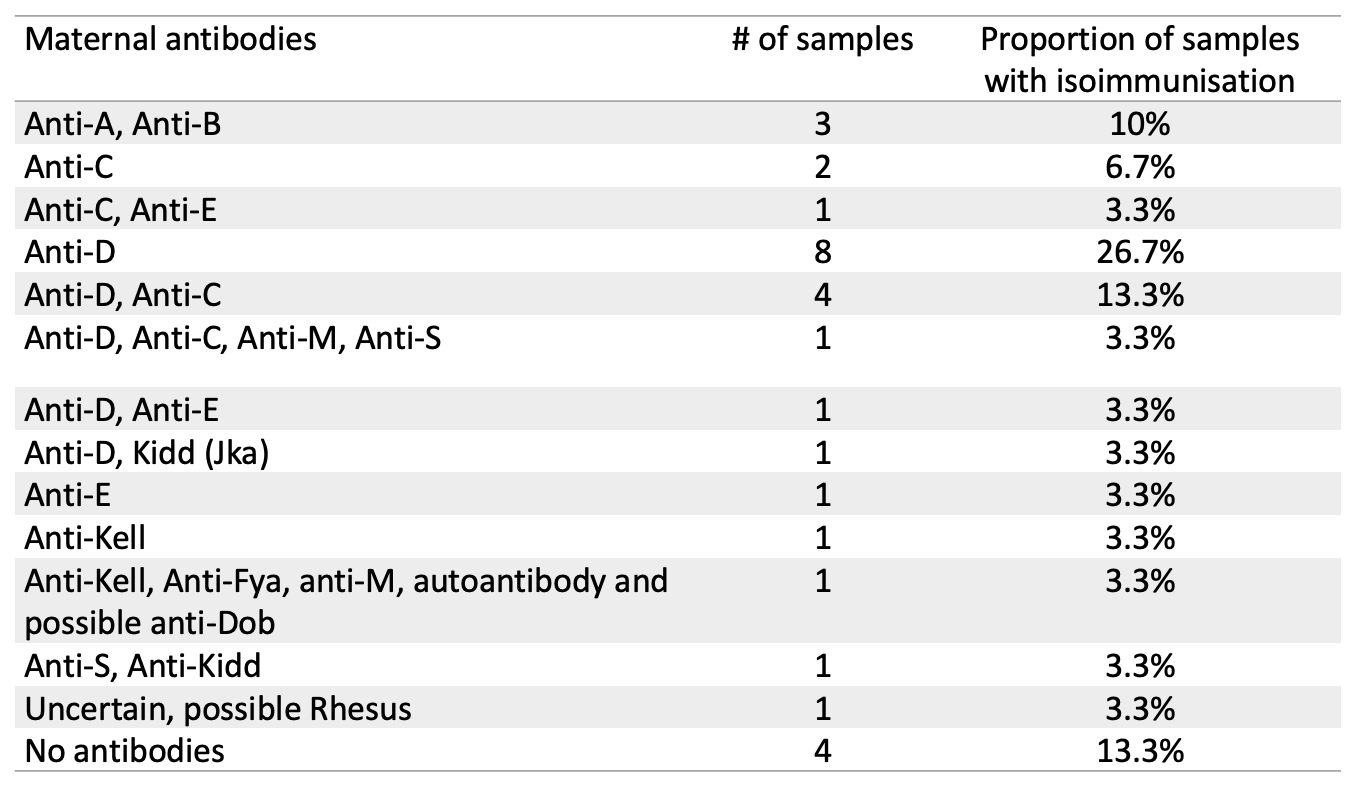Neonatal Hematology & Bilirubin Metabolism
Neonatal Hematology & Bilirubin Metabolism 1: Bilirubin
124 - Neonatal exchange transfusions – a retrospective observational study
Publication Number: 124.238
- EM
Emma J. McCormack, MD (she/her/hers)
Neonatal Registrar
King Edward Memorial Hospital
Perth, Western Australia, Australia
Presenting Author(s)
Background:
Neonatal exchange transfusion (ET) is performed most commonly to treat severe hyperbilirubinemia not responding to intensive phototherapy. ET is a high-risk procedure and rarely performed in neonatal intensive care units in upper income countries. This unfamiliarity can increase the rate of complications.
Objective:
To improve the quality of exchange transfusion provided in tertiary paediatric health centres.
Design/Methods:
We performed a retrospective observational study of infants receiving ET in the neonatal period over 14 years at the sole tertiary maternity and children's hospitals in Western Australia. We collected information regarding patient demographics, the indication of ET, clinical features, procedural details, adjuvant therapies, and short-term outcomes. We excluded infants receiving dilutional ET for polycythaemia.
Results:
The study included 47 infants requiring ET from 2004 to 2017. There was a decreasing trend in the number of ETs performed per year during the study period, with the most ETs performed in 2005 (n=9) and nil in 2012 and 2013. The common indications for ET were hyperbilirubinemia (n=41) resulting from Rh-isoimmunisation (n=17), followed by ABO (n=3) and minor (n=7) blood group incompatibility and glucose 6-phosphate dehydrogenase deficiency (n=6). Umbilical catheters were used for access in the majority of cases (n=41), and the push-pull method (n=25) was used more often than the isovolumic method (n=21). The rate of fall of serum bilirubin in the infants where ET was performed for hyperbilirubinemia was variable (median 8.6; IQR 4.4, 13.7% per hour). Adjuvant therapies infants received were phototherapy, intravenous immunoglobulin, albumin, fresh frozen plasma, calcium gluconate, platelets, prior intrauterine transfusions, cryoprecipitate, and chemotherapy. Complications related to the procedure were seen in 15/47 infants. The rate of complications per year (0-66%) did not increase over the study period. Common complications were coagulopathy, metabolic acidosis, apnoea, and signs of respiratory distress. One year follow up data was available for 39/47 infants of which 31 infants did not have any long-term adverse effects. Long-term adverse effects of the underlying condition were seizures and hearing impairment.
Conclusion(s):
ETs are becoming less frequent over 17 years without an increase in the rate of complications.


